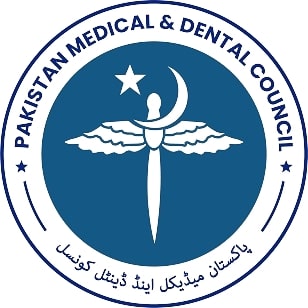FREQUENCY OF TRANSFUSION-TRANSMISSIBLE INFECTIOUS DISEASES AMONG BLOOD DONORS AT AKHTER SAEED TRUST HOSPITAL LAHORE, PAKISTAN
DOI:
https://doi.org/10.59058/jaimc.v20i3.26Keywords:
Blood transfusion, Blood donors, transfusion-transmissible infectious diseases, HIV, HBV, VDRL, HCV, infectionsAbstract
Background: Blood transfusion is an essential lifesaving treatment. The unsafe blood transfusion practices are one of the reasons of spreading transfusion-transmissible infections among individuals. It is necessary to screen the all donated blood units for HBV, HCV, HIV, VDRL, and MP.
Aims: This aim of this study was to evaluate the burden of transfusion-transmissible infectious diseases caused by blood transfusions among donors.
Materials & Methodology: It was a prospective observational study which included the 9114 blood donors who attended the Akhtar Saeed Trust Hospital Lahore from January 2020 to September 2022. The informed consent was taken from all blood donors. 3-5 ml of venous sample was drawn by using aseptic technique from blood donors on enrollment. Screening of blood donors was done by Chemiluminescence immunoassay (Maglumi-800) for HBV, HCV, HIV and VDRL. The MP was confirmed by peripheral blood picture on slide. According to the automation kit manufacturer’s guidelines, cut-off value for reporting positive results of HBV, HCV, HIV and VDRL was calculated. Data was analyzed by using SPSS version 25.0.
Results: The mean age was 27.79 + 12.1 years. The numbers of volunteer and replacement donors were 961 (10.54%) and 8153 (89.45%) respectively. The total numbers of positive donors for transfusion transmissible infectious diseases were 591/9114 (6.49%). The seropositivity was found to be 170/9114 (1.86%) for HBV, 324/9114 (3.55%) for HCV, 33/9114 (0.36%) for HIV, 64/9114 (0.70%) for VDRL, and 0/9114 (0.0%) for MP respectively.
Conclusion: There is currently a low risk of transfusion transmissible infectious diseases but the availability of safe blood is contingent on screening tests and appropriate donor selection.
References
Organization WH. WHO Model Lists of Essential Medicines (World Health Organization, 2019).
Okoroiwu HU, Asemota EA. Blood donors deferral prevalence and causes in a tertiary health care hospital, southern Nigeria. BMC health services research. 2019;19(1):1-7.
Saqlain N, Ahmed N, Ahmed A, Hareem S. BLOOD DONATION;: KNOWLEDGE, ATTITUDE AND BELIEFS OF THE FEMALE ATTENDANTS. The Professional Medical Journal. 2017;24(12):1806-11.
Saba N, Nasir JA, Waheed U, Aslam S, Mohammad I, Wazeer A, et al. Seroprevalence of transfusion-transmitted infections among voluntary and replacement blood donors at the Peshawar Regional Blood Centre, Khyber Pakhtunkhwa, Pakistan. Journal of Laboratory Physicians. 2021;13(02):162-8.
Muazzam A, Javed S. Predictors of caregiver's burden: interplay of physical and emotional health and perceived hope in children with thalassemia and hemophilia. Pakistan Journal of Social and Clinical Psychology. 2013;11(2):36.
Ehsan H, Wahab A, Shafqat MA, Sana MK, Khalid F, Tayyeb M, et al. A Systematic Review of Transfusion Transmissible Infections Among Blood Donors and Associated Safety Challenges in Pakistan. Blood. 2020;136:26-8.
Farhat M, Yasmeen A, Ahmad A. An overview of hepatitis B and C in Pakistan. Int J Microbiol Allied Sci. 2014;1(2):98-102.
Pasha O, Saleem S, Ali S, Goudar SS, Garces A, Esamai F, et al. Maternal and newborn outcomes in Pakistan compared to other low and middle income countries in the Global Network’s Maternal Newborn Health Registry: an active, community-based, pregnancy surveillance mechanism. Reproductive health. 2015;12(2):1-10.
Pokhrel A, Chaudhary J, Sachdeva P, Das A, Gupta A, Kirtania T, et al. Trends of Infectious Disease Markers Among Healthy Blood Donors In Northern India: A Ten Year Study. Transfusion and Apheresis Science. 2022:103442.
Motayo BO, Faneye AO, Udo UA, Olusola BA, Ezeani I, Ogiogwa JI. Seroprevalence of transfusion transmissible infections (TTI), in first time blood donors in Abeokuta, Nigeria. African Health Sciences. 2015;15(1):19-24.
Arshad A, Borhany M, Anwar N, Naseer I, Ansari R, Boota S, et al. Prevalence of transfusion transmissible infections in blood donors of Pakistan. BMC hematology. 2016;16(1):1-6.
Manzoor I, Hashmi N, Daud S, Ajmal S, Fatima H, Rasheed Z, et al. Seroprevalence of transfusion transmissible infections (TTIS) in blood donors. Biomedica. 2009;25(10):154-8.
Attaullah S, Khan S, Khan J. Trend of transfusion transmitted infections frequency in blood donors: provide a road map for its prevention and control. Journal of translational medicine. 2012;10(1):1-5.
Cotter TG, Charlton M. Global elimination of hepatitis C virus by 2030: the pessimistic view. Clinical Dilemmas in Viral Liver Disease. 2020:244-9.
Zaheer HA, Waheed U. Blood safety system reforms in Pakistan. Blood Transfusion. 2014;12(4):452.
Datta P, Mohi G, Chander J. Biomedical waste management in India: Critical appraisal. Journal of laboratory physicians. 2018;10(01):006-14.
Mumtaz Z, Bowen S, Mumtaz R. Meanings of blood, bleeding and blood donations in Pakistan: implications for national vs global safe blood supply policies. Health policy and planning. 2012;27(2):147-55.
Mostafa A, Shimakawa Y, Medhat A, Mikhail NN, Chesnais CB, Arafa N, et al. Excess mortality rate associated with hepatitis C virus infection: a community-based cohort study in rural Egypt. Journal of hepatology. 2016;64(6):1240-6.
Waheed Y, Shafi T, Safi SZ, Qadri I. Hepatitis C virus in Pakistan: a systematic review of prevalence, genotypes and risk factors. World journal of gastroenterology: WJG. 2009;15(45):5647.
Negi G, Gaur DS. Trends of transfusion transmissible diseases among blood donors at Uttarakhand, India. Indian journal of community medicine: official publication of Indian Association of Preventive & Social Medicine. 2014;39(3):183.
Chattoraj A, Behl R, Kataria V. Infectious disease markers in blood donors. Medical Journal Armed Forces India. 2008;64(1):33-5.
Fasola FA, Kotila TR, Akinyemi JO. Trends in transfusion-transmitted viral infections from 2001 to 2006 in Ibadan, Nigeria. Intervirology. 2008;51(6):427-31.
Nalini G, Vijay K, Amarjit K. Seroprevalence of HIV, HBV, HCV and syphilis in voluntary blood donors. Indian journal of medical sciences. 2004;58(6):255-7.
Downloads
Published
How to Cite
Issue
Section
License
Copyright (c) 2023 JAIMC

This work is licensed under a Creative Commons Attribution 4.0 International License.
The articles published in this journal come under creative commons licence Attribution 4.0 International (CC BY 4.0) which allows to copy and redistribute the material in any medium or format Adapt — remix, transform, and build upon the material for any purpose, even commercially under following terms.
-
Attribution — You must give appropriate credit, provide a link to the license, and indicate if changes were made. You may do so in any reasonable manner, but not in any way that suggests the licensor endorses you or your use.
- No additional restrictions — You may not apply legal terms or technological measures that legally restrict others from doing anything the license permits.
The editorial board of the Journal strives hard for the authenticity and accuracy of the material published in the Journal. However, findings and statements are views of the authors and do not necessarily represent views of the Editorial Board. Many software like (Google Maps, Google Earth, Biorender (free version)) restricts the free distribution of materials prepared using these softwares. Therefore, authors are strongly advised to check the license/copyright information of the software used to prepare maps/images. In case of publication of copyright material, the correction will be published in one of the subsequent issues of the Journal, and the authors will bear the printing cost.










